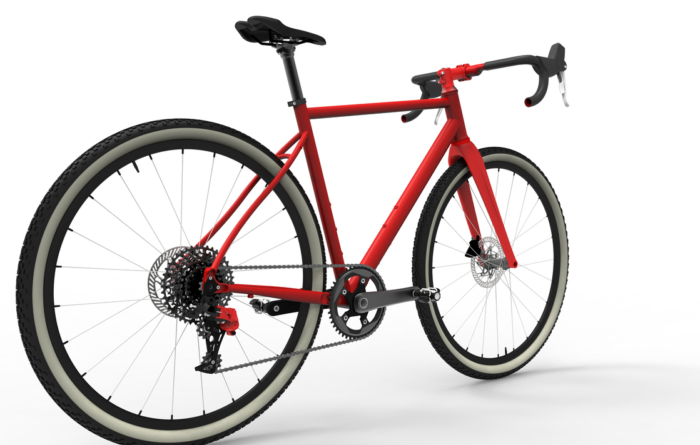Carbon Fiber Technology
Carbon fiber technology has revolutionized the manufacturing industry, particularly in the production of lightweight and high-strength composite materials. One of the most popular carbon fiber products is roll-wrapped prepreg carbon fiber tubes.

Prepreg Carbon Fiber Material
Prepreg carbon fiber material is a type of composite material consisting of carbon fiber fabric pre-impregnated with a resin system. The term “prepreg” is derived from the phrase “pre-impregnated” and refers to the fact that the carbon fiber fabric has already been impregnated with the resin before use.
The resin system used in prepreg carbon fiber material can vary, but is typically an epoxy resin that is chosen for its excellent bonding properties and high strength. Other resin systems such as polyester, vinyl ester, and phenolic resins can also be used depending on the specific application.
Prepreg carbon fiber material is often used in the production of high-performance parts and components in industries such as aerospace, automotive, and sports equipment. The material offers excellent strength, stiffness, and durability, while also being lightweight and easy to work with.
Prepreg carbon fiber material can be cured using a variety of methods, including autoclave, vacuum bagging, and press molding. The curing process involves heating the material to a specific temperature and applying pressure to ensure that the resin fully cures and bonds with the carbon fiber fabric.
Roll-Wrapped Prepreg Carbon Fiber Tubes
Roll-wrapped prepreg carbon fiber tubes are created by wrapping carbon fiber prepreg (pre-impregnated carbon fiber) sheets around a mandrel in a specific pattern. The mandrel is then placed inside an oven to cure the resin and form the tube shape. Roll-wrapping is a process that involves winding the prepreg material around the mandrel at a specific angle, which helps to achieve a specific strength and stiffness in the finished product.
Prepreg materials are used in the manufacturing of carbon fiber products because they offer consistent quality and a high level of customization. The resin in the prepreg material is already impregnated into the carbon fiber sheets, which ensures that the resin is evenly distributed and fully cured during the manufacturing process. This results in a high-strength and durable finished product.
Roll-wrapped prepreg carbon fiber tubes have a number of advantages
over traditional metal tubes. They are lighter, stronger, and more resistant to corrosion, making them ideal for use in a wide range of industries, including aerospace, automotive, and marine. They are also highly customizable, with a range of sizes and shapes available to suit a variety of applications.
Overall, roll-wrapped prepreg carbon fiber tubes are an innovative and versatile technology that has many advantages over traditional metal tubes, making them an increasingly popular choice in a variety of industries.
Metal Processing for Carbon Fiber
Metal processing is often used in the manufacturing of carbon fiber composites, as it is necessary to create metal parts that can be integrated with the carbon fiber material. One common method of metal processing for carbon fiber is through the use of metal inserts.
Metal inserts are metal components that are integrated into carbon fiber parts during the manufacturing process. These inserts are typically made of materials such as aluminum, titanium, or steel, and are used to provide additional strength, stiffness, or functionality to the finished product. The metal inserts are often placed in strategic locations within the carbon fiber part, such as at points of high stress or where additional support is needed.
The metal inserts are typically created through a variety of metal processing methods, including CNC machining, casting, or forging. Once the metal inserts are manufactured, they are integrated into the carbon fiber part through a process called bonding. Bonding involves using adhesives or other methods to secure the metal insert to the carbon fiber material.
Overall, metal processing is an important aspect of carbon fiber composite manufacturing, as it allows for the creation of complex and functional parts that can withstand the demands of various applications. By combining metal processing with carbon fiber technology, manufacturers can create lightweight and high-performance products that offer exceptional strength and durability.
Options for Carbon Fiber Painting
Carbon fiber parts can be painted in a variety of ways, depending on the desired finish and level of durability. Here are some of the most common options for carbon fiber painting:
- Clear Coat: Clear coat is a popular option for carbon fiber parts as it allows the natural look of the carbon fiber to show through while also providing a protective layer. Clear coat can be applied in several layers
to create a glossy or matte finish, depending on the desired look.
- Colored Clear Coat: Colored clear coat is a clear coat with added pigments to create a specific color. This option allows the carbon fiber
pattern to still show through while also adding color to the part.
- Custom Paint: Custom paint allows for the creation of unique designs and color combinations. This option requires the use of a base coat, followed by multiple layers of color and clear coat.
- Vinyl Wrap: Vinyl wrap is a cost-effective option that allows for easy customization of carbon fiber parts. Vinyl wraps can come in a variety of colors and patterns and can be easily applied to the surface of the part.
It is important to note that before painting carbon fiber parts, they must be properly prepared by cleaning, sanding, and priming the surface. This helps to ensure that the paint adheres properly and provides a long-lasting finish.
Grinding Process for Carbon Fiber
Grinding is a common process used in the fabrication of carbon fiber parts, as it is necessary to remove excess material and achieve the desired shape and size of the part. Here are some important things to know about grinding carbon fiber:
- Safety: Grinding carbon fiber can produce fine dust particles that are harmful to breathe in. It is important to use proper safety equipment, such as a respirator mask and eye protection, to prevent inhalation of dust.
- Tool Selection: Grinding tools should be carefully selected based on the material being worked with. Diamond tools are often used for grinding carbon fiber, as they are highly durable and can maintain their sharpness for longer periods of time.
- Cooling: Cooling the carbon fiber during the grinding process can help to prevent the material from overheating and potentially causing damage. Cooling can be achieved through the use of coolants or by taking breaks during the grinding process.
- Finishing: After grinding, it is important to properly finish the surface of the carbon fiber part. This can be achieved through sanding, polishing, or other methods, depending on the desired finish.
Applications of Carbon Fiber Manufacturing
Carbon fiber manufacturing is used in a wide range of industries and applications due to its exceptional strength, stiffness, and lightweight properties. Some common applications of carbon fiber manufacturing include:
- Aerospace: Carbon fiber composites are commonly used in the aerospace industry for the production of aircraft components such as wings, fuselages, and tail sections. These parts require high strength and stiffness while also being lightweight, making carbon fiber an ideal material choice.
- Automotive: Carbon fiber is also used in the automotive industry to reduce weight and improve performance. Carbon fiber parts can be used in components such as body panels, suspension systems, and interior trim.
- Sports Equipment: Carbon fiber composites are commonly used in the production of sports equipment such as bicycles, golf clubs, and tennis rackets. These products require high strength and stiffness while also being lightweight, making carbon fiber an ideal material choice.
- Medical Equipment: Carbon fiber is also used in the production of medical equipment such as prosthetics and implants. Carbon fiber’s biocompatibility and high strength-to-weight ratio make it an ideal material for these applications.
- Construction: Carbon fiber is increasingly being used in the construction industry for reinforcement of concrete and other building materials. Carbon fiber composites can also be used for the production of lightweight structural components such as beams and columns.
Overall, carbon fiber manufacturing has a wide range of applications across various industries due to its exceptional strength and lightweight properties.
As a professional manufacturer, we are pleased to offer a wide range of carbon fiber tubes that are specifically designed for various applications. Our tubes boast exceptional strength and stiffness-to-weight ratios, while also featuring an incredibly smooth surface finish with an interior Ra value ranging from 0.08 to 0.25um. With our commitment to quality and performance, you can trust that our carbon fiber tubes are built to withstand the demands of even the most challenging projects.
